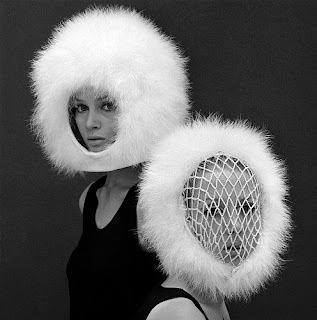YOUTH GENERATION
As President Kennedy announced the Space Race in 1961, an emerging generation of kids in Europe and the US were looking to the stars and beyond for ideas about what life had to offer. There was freedom in the air. And while NASA launched rockets, young adults fueled a youth movement that ignited the planet. (below: David Hemmings as a photographer in Antonioni's Blow Up).
In England, government policy changes in 1960 had direct social repercussions- young men found themselves suddenly free from national service. Beatles drummer Ringo Starr said in a May 2008 interview that the end of mandatory national service in Britain made it possible for The Beatles to exist. “We were the first generation that didn’t go into the army. I missed the call up by, like, 10 months, and so we were allowed, as these teenagers, not to be regimented and turn into these musicians."
Economies were stronger and teenagers found they didn't have to contribute as much to household incomes with money earned from after-school and summer jobs. They had time and, more importantly, they had spending money. It was a new era that offered young adults the freedom to invest in clothes and hobbies like never before as they explored self-expression and identity. The power of these dollars and pounds was critiqued alongside the Fashion world in the excellent film, Who Are You, Polly Magoo?, where TV interviewers producing a feature on a young model discussed how the ideal of sexuality and beauty had suddenly grown younger due to the youth market. I wonder what they would say about contemporary advertising and ageism? A short piece covering 60s trends at Sixties City.

OF MODS AND MEN
One group of British kids with a taste for Jazz and American R&B began dressing in tailored Italian suits and pointed shoes. Distancing themselves from the biker-greaser look of the "Rockers", the "Mods" were a sub-culture that prized a minimal, modern aesthetic. In TV documentaries of the time, much attention was given to young men who spent large sums on their outfits and to the particulars of cuts and fabrics. Some Mod history Here and Here. Mod movies Here.

Where Mod style had originally defined a smaller sub-culture (and one with incarnations through to the present), the word Mod has became a bit of a generalization to describe fashion that reflects minimal, trim, monochromatic, two-tone, Pop Art, and Op Art sensibilities. The Who, a band with Mod roots, became well-known for using Pop Art-influenced symbols in their wardrobe. Along with bold stripes, images that had iconic British-ness, like the Union Jack and RAF target, took hold in the mainstream and remain identified with Mod revival. Patrick McGoohan's The Prisoner followed a similar line of fashion with characters in bold stripes and accents. A more-to-Mod roots band meets Eero Aarnio below in a rare shot of The Small Faces. Readers interested in a historical view on stripes can check out the book, The Devil's Cloth.



"Are You a Mod or a Rocker?"
"I'm a Mocker."
-Ringo Starr/A Hard Days Night
"I'm a Mocker."
-Ringo Starr/A Hard Days Night

With the pop explosion of The Beatles, The Who, and The Rolling Stones, a variety of fashion styles and sub-cultures entered the mainstream and became world-wide expressions of the generation. Boutiques sprouted up to meet the demand. Carnaby Street was an epicenter, mythicized further in pop films like Smashing Time. According to Sixties City, the Treasury in the UK reported that fashion reached a 1.7 billion pound industry in 1965. That's a figure worth tracking down! I'm curious to learn if those numbers are accurate.



Designer Pierre Cardin defined some of the suited look of the period, dressing Patrick MacNee's John Steed in The Avengers and inspiring the collarless suits for The Beatles. A British Invasion look was in! And for men looking for a dressy alternative to wearing ties, U.N.C.L.E.'s David MacCallum and The Beatles inspired a re-popularization of the turtleneck.






MOONGIRLS
Fashion for women embraced the anything-goes attitude of the times. Yves Saint Laurent's Mondrian dress and the mini skirt popularized by Andre Courreges and Mary Quant were stand-out creations. In 1964, the year Beatlemania really hit on the global level, Andre Courreges' fascination with the Space Age resulted in a fabulous line of clothes inspired by NASA white and silver. He launched his Moon Girl Collection, which included high skirts and dresses with geometric patterns and cut-outs, space-like helmets, and mid-shin PVC boots.


Paco Rabanne, Pierre Cardin, Rudi Gernreich, and others followed with their own Futuristic lines. The movement had a great effect on costume design in a number of iconic 1960s films, including The 10th Victim (Elio Petri/1965) and Barbarella (Vadim/1968). Agent David Foster (Permission To Kill) found the portraits of Patty Boyd below reminiscent of the graphics for the Eurospy classic Kiss Kiss Bang Bang.






What I will generalize as "Mods and Moongirls" are some aesthetic anchors to the Spy Vibe of 1960s Film and Pop Culture. The styles define the era and continue to resonate in contemporary culture. It seems, however, that where a 60s trim style for men has returned in a Metro look, the experimental, Space Age look of Women's fashions has remained 60s iconic. Gone are the bold stripes, cut-out dresses, Go-Go boots, and other PVC gear. Many echoes of 60s fashion crop up around me. I haven't spotted a Moongirl yet, but I'm still looking :)
Check out Atom Retro for Mod clothing sales and info!
With this general overview of a cultural context, we'll explore specific Spy Vibe film costumes in... THE FUTURE! See the SpyVibe.com website for related videos and discussions about costume design in 60s cinema.

